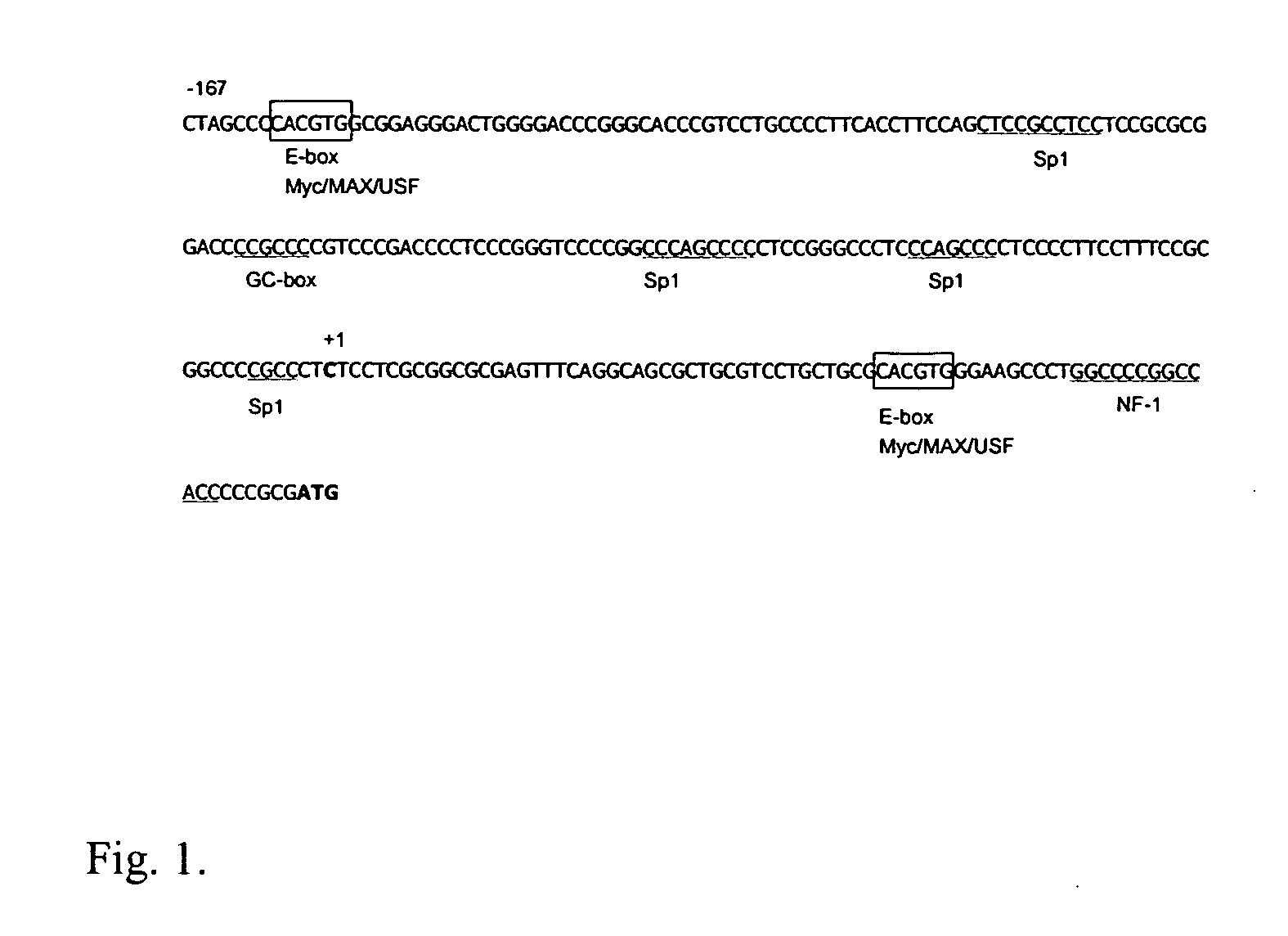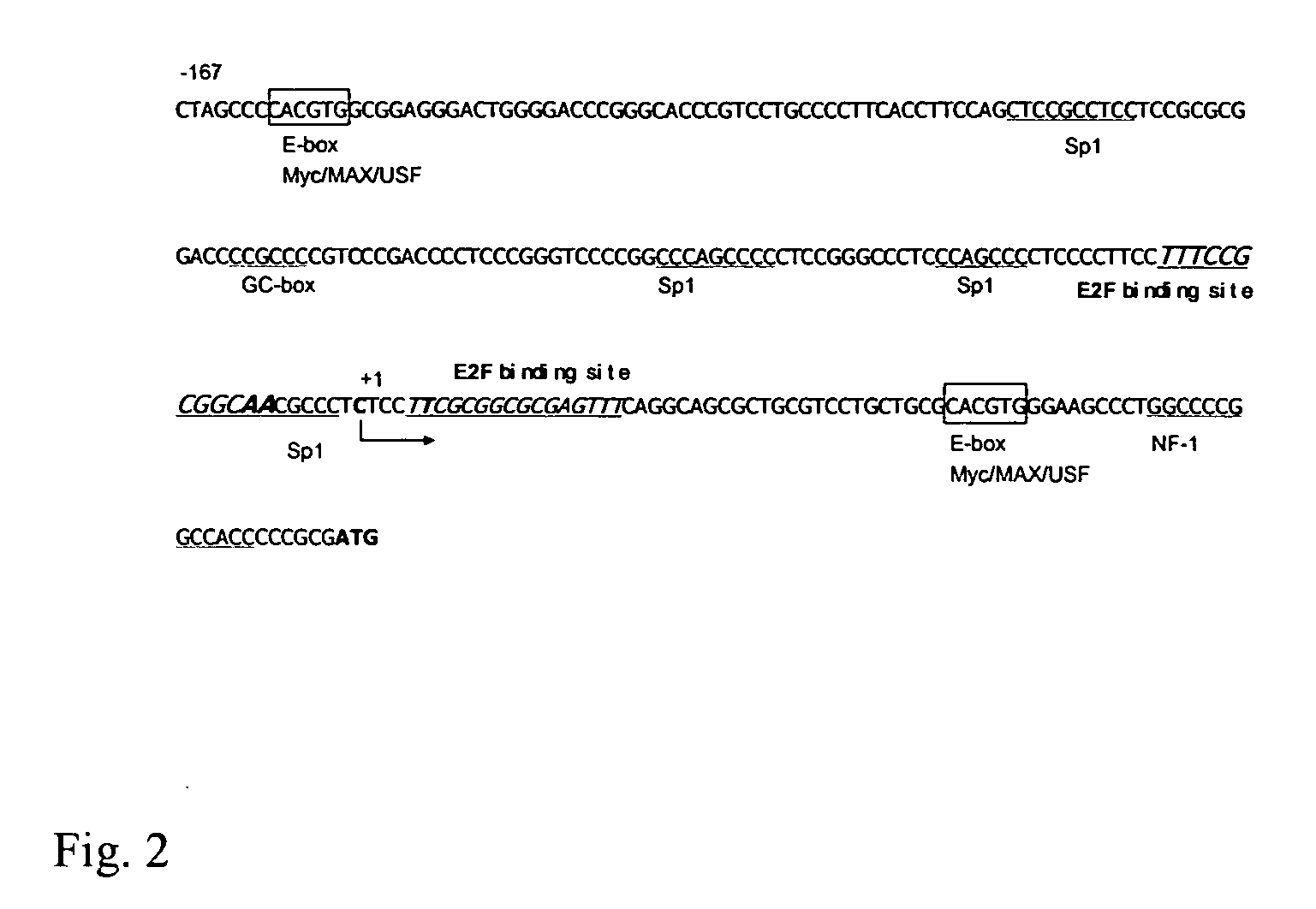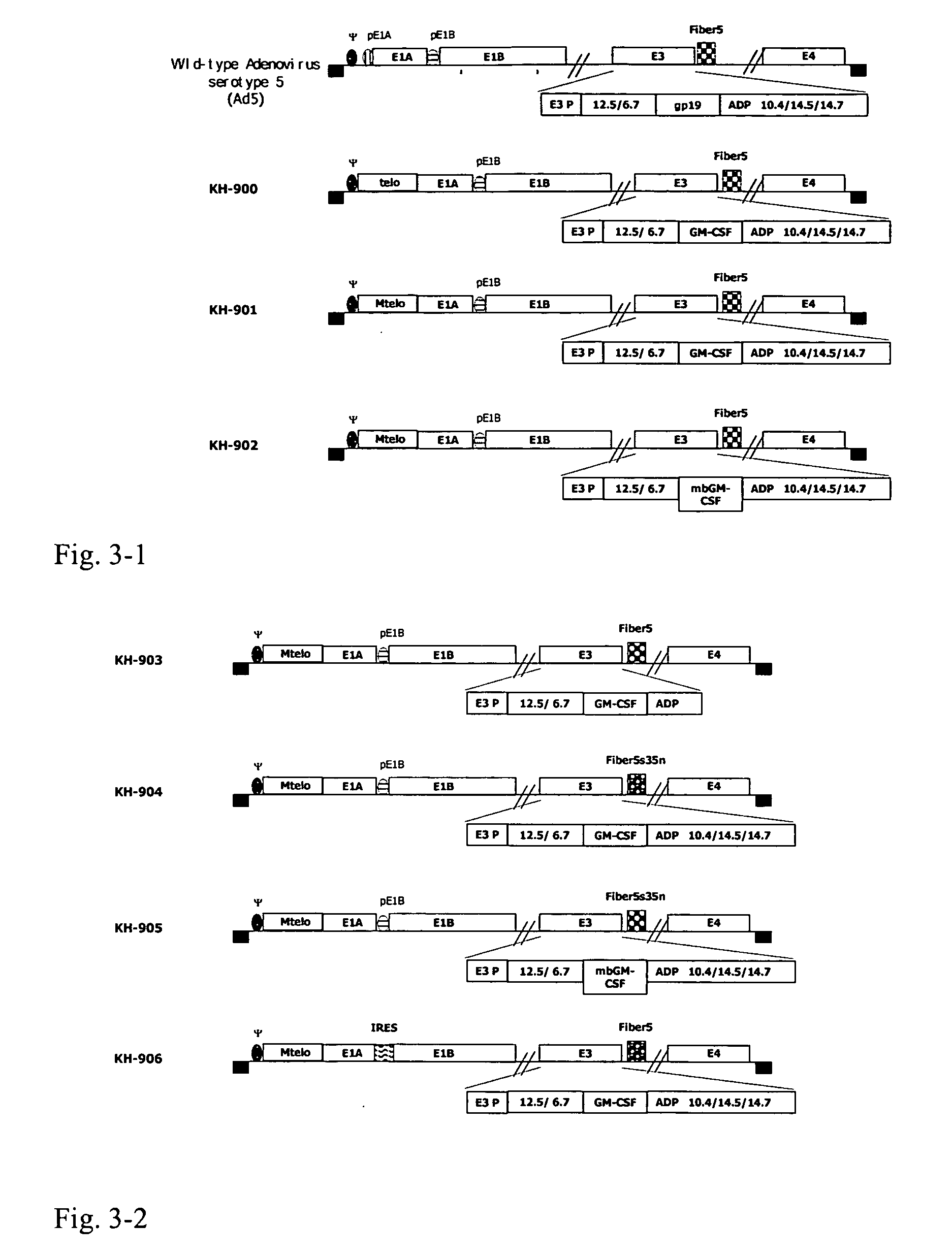Construction of oncolytic adenovirus recombinant specifically expressing immune modulatory factor gm-csf in tumor cells and uses thereof
a technology of immune modulatory factor and tumor cells, which is applied in the field of tumor gene therapy, can solve the problems of severe side effects, work did not proceed further, and the relocation of viral packaging signals is not a viable approach to minimize the impact of endogenous regulatory elements, so as to improve targeting capability, reduce the transcription activity of linked genes, and improve the effect of transcription activity
- Summary
- Abstract
- Description
- Claims
- Application Information
AI Technical Summary
Benefits of technology
Problems solved by technology
Method used
Image
Examples
example 1
[0117]1. Construction of replicating oncolytic adenovirus recombinant KH-901 and its analysis (FIG. 4 and FIG. 5).
[0118]2. According to the sequence of the hTERT promoter shown in FIG. 1, two primers as follow were synthesized:
A. 5′-GTC TGG ATC CGC TAG CCC CAC G-3′B. 5′-CGA CCG GTG ATA TCG TTT AAT TCG C-3′
[0119]For the amplification of the hTERT promoter by PCR method, in which the activated human RNA was used as template. Conditions for the PCR reaction was as follows: for the first cycle, 94° C. denature for 5 minutes, 81° C. annealing for 1 minute and 72° C. for extension for 2 minutes. For each of the succeeding cycle, 93° C. denature for 1 minute, then subject to agar gel analysis and hTERT promoter fragment was recovered. It was indicated by sequencing that the obtained promoter fragment is the same as that as the disclosed (FIG. 1). This fragment of DNA was then cloned onto pUC19 vector, and reformed it to the sequence as shown in FIG. 2 by mutagenesis via a kit from Stratege...
example 2
[0131]KH-900 was constructed following a similar routine to that for KH-901, except that no poly (A) was contained in the plasmid pKH-901a and no mutatant in the hTERT promoter fragment; the sequence is the same to SEQ. ID No. 1. The resulted plasmid isnamed as pKH-900a; pKH-900a were co-transfected with pKH-901b in HeLa cells to generate KH-900.
example 3
[0132]For KH-902 construction, the cDNA of GM-CSF in pKH-901b was replaced with the membrane bound version as shown by SEQ ID NO. 4, resulting in pKH-902b. pKH-901a and pKH-902b were co-transfected in HeLa cells to generate KH-902.
PUM
| Property | Measurement | Unit |
|---|---|---|
| Temperature | aaaaa | aaaaa |
| Temperature | aaaaa | aaaaa |
| Temperature | aaaaa | aaaaa |
Abstract
Description
Claims
Application Information
 Login to View More
Login to View More - R&D
- Intellectual Property
- Life Sciences
- Materials
- Tech Scout
- Unparalleled Data Quality
- Higher Quality Content
- 60% Fewer Hallucinations
Browse by: Latest US Patents, China's latest patents, Technical Efficacy Thesaurus, Application Domain, Technology Topic, Popular Technical Reports.
© 2025 PatSnap. All rights reserved.Legal|Privacy policy|Modern Slavery Act Transparency Statement|Sitemap|About US| Contact US: help@patsnap.com



